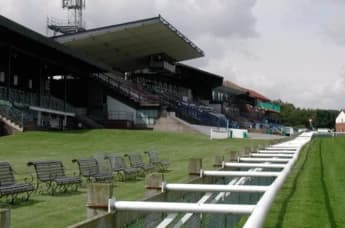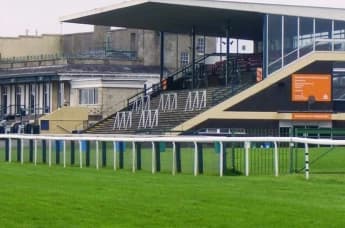Ayr Racecourse
Ayr Racecourse, located on Whitletts Road in Ayr, Scotland, has been a cornerstone of British horse racing for the reason that its inauguration in 1907. This iconic venue boasts flat racing and National Hunt courses, attracting racing fans from around the world.
The Rich History of Ayr Racecourse
Origins and Early Racing in Ayr
Horse racing in Ayr can hint its roots lower back to 1576, though it wasn’t until 1771 that the first authentic race meeting was held. This occasion came about at a racecourse inside the Seafield location of the city. The unique tune becomes a mile-length oval with challenging, sharp bends, which introduces the exhilaration of the races.
In its early years, horse racing in Ayr became mostly supported by way of nearby aristocracy, which included influential contributors to the Caledonian Hunt. Notable figures in the history of Ayr Racecourse consist of the Earl of Eglinton, Sir James Boswell, and the Duke of Portland, who were instrumental in selling the game inside the vicinity.
The Western Meeting and the Ayr Gold Cup
In 1824, Ayr Racecourse became home to the Western Meeting, which quickly grew in prominence. By 1838, the assembly provided an awesome £2000 in prize money, making it the richest two-yr-vintage race in Britain at the time. The centerpiece of this occasion, the Ayr Gold Cup, was transformed right into a handicap race in 1855 and has ended up Europe’s most treasured sprint handicap.
Relocation and Modernization
As the popularity of horse racing in Ayr persisted in developing, the original Seafield racecourse’s small length and constrained facilities became a predicament. In 1907, the racecourse was relocated to its contemporary website in the Craigie vicinity of Ayr. The new path became meticulously designed, drawing suggestions from Newbury Racecourse, but with an awesome six-furlong immediate direction in preference to a mile-long stretch. The former Seafield racecourse location has for the reason that been repurposed, now serving as gambling fields and a part of the Seafield golfing path. The legacy of the unique tune remains glaring in neighborhood road names including Racecourse Road and Racecourse View.
Architectural Heritage: The Western House
The Western Club, proprietors of Ayr Racecourse, commissioned the development of the Western House between 1919 and 1925. Initially supposed as a clubhouse, it later advanced into an inn and activities venue. The Western House is now an indexed building, celebrated for its Arts and Crafts architectural style, designed by Harold Tarbolton. This historic shape remains a sizable landmark on the racecourse grounds.
Evolution of Ayr Racecourse: Jumps and the Scottish Grand National
In 1950, jumps music was introduced at Ayr Racecourse, in addition to improving its recognition. The venue's repute as Scotland's foremost racecourse turned into solidified in 1966 whilst the Scottish Grand National changed into transferred to Ayr following the closure of Bogside Racecourse. This annual occasion has emerged as a highlight of the Scottish racing calendar, attracting top-tier horses and jockeys from across the UK and the past.
Major Racing Events at Ayr Racecourse
Ayr Racecourse hosts several race meetings at some point in the 12 months, however, two stand out because the most prestigious. The first is the Scottish National Festival, held each April. This two-day event functions the Grade 3 handicap National Hunt steeplechase, known as the Scottish Grand National. The race is broadcast stay on ITV, with over 20,000 spectators attending the event individually.
The second marquee event is the Ayr Gold Cup, a flat handicap race run over six furlongs every September. This race day consists of eight interesting races, making it one of the most expected occasions on the British racing calendar.







